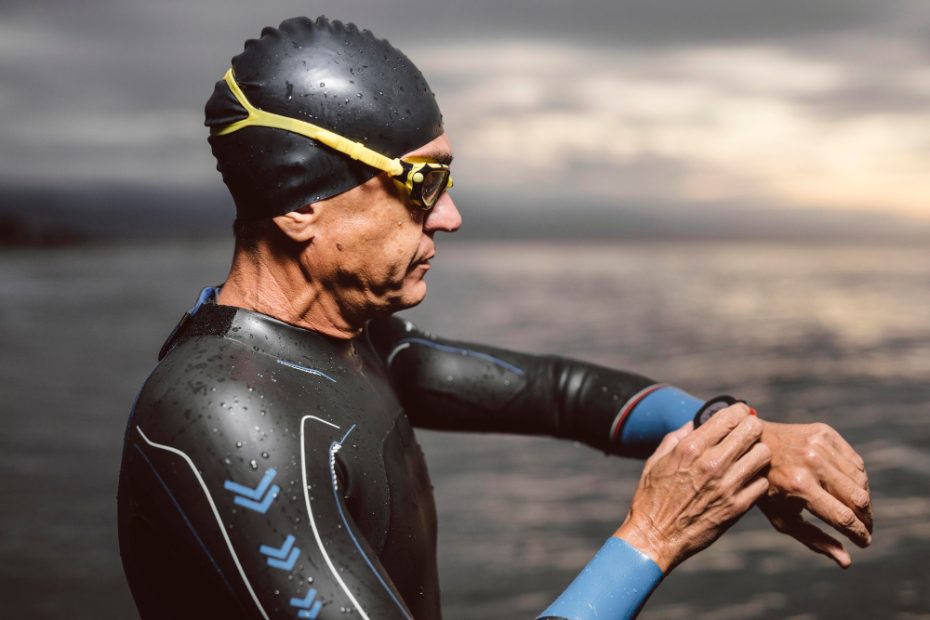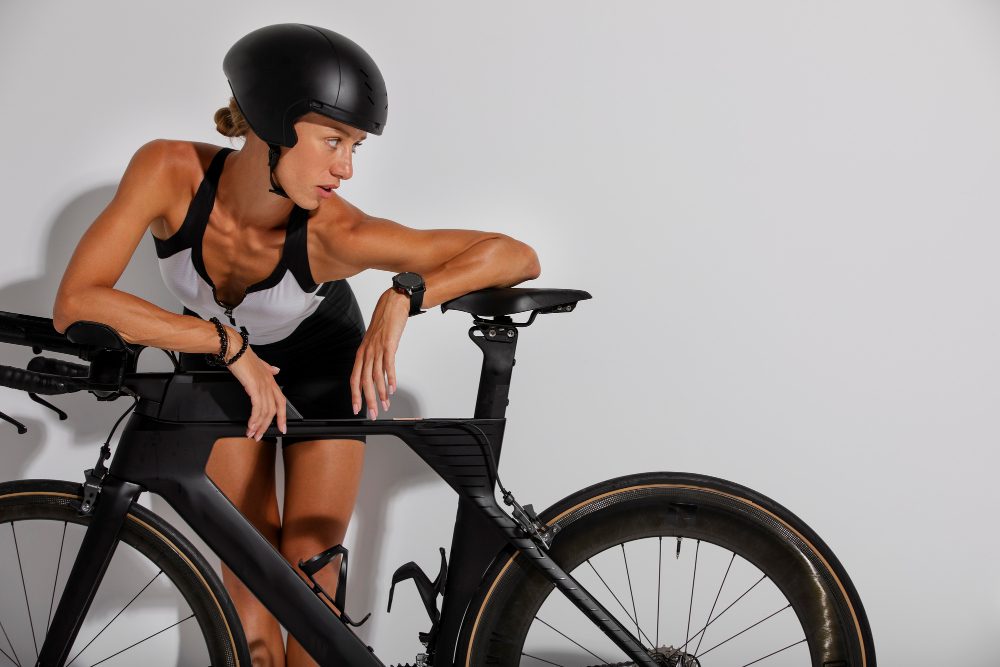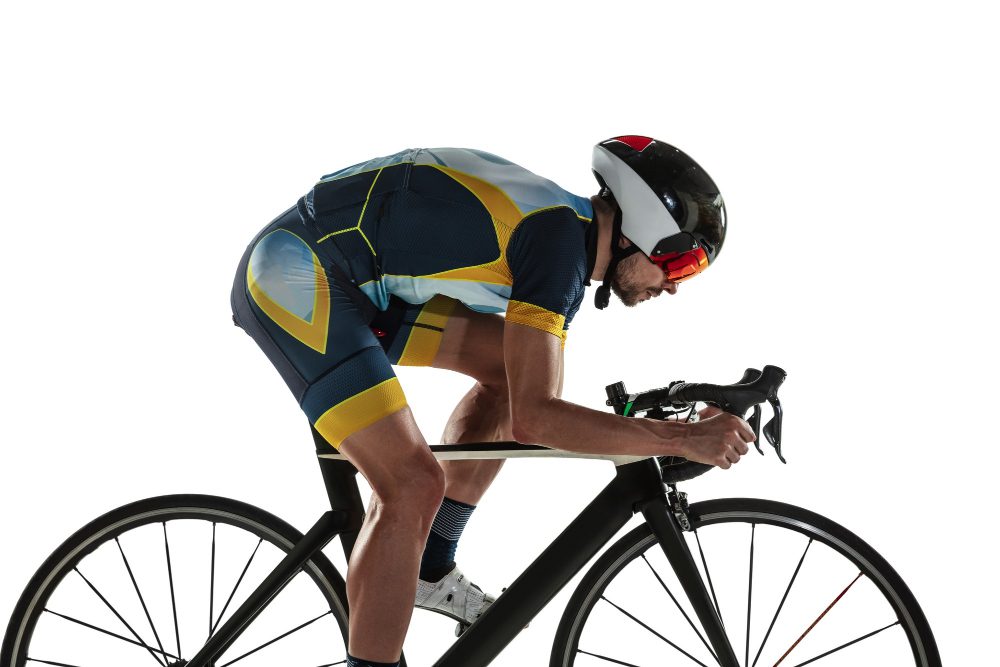Do triathletes swim in bike shorts?
Triathlons are multi-sport endurance events that typically include swimming, cycling, and running. Athletes participating in triathlons often have to transition between these three disciplines during the race. One common question that arises is whether or not triathletes swim in bike shorts.
The importance of swimwear in triathlons
Swimming is usually the first leg of a triathlon, and it requires a specific type of swimwear for optimal performance. In most triathlons, participants wear specialized swimwear such as swim skins or wetsuits, depending on water temperature regulations. These garments are designed to reduce drag and improve buoyancy in the water. They are typically made of lightweight and hydrophobic materials that allow swimmers to move through the water more efficiently.
Bike shorts for the cycling leg
Once triathletes complete the swim leg, they transition to the cycling portion of the race. During this phase, many athletes change into bike-specific clothing, including padded cycling shorts or bib shorts. These shorts are designed to provide comfort and support while riding a bike for an extended period.
“Wearing bike shorts during the swim leg would be highly impractical and uncomfortable.”
Bike shorts are typically made of moisture-wicking materials that help keep the rider dry and prevent chafing. They feature a padded insert known as a chamois, which provides cushioning and reduces friction between the cyclist’s body and the saddle. This padding helps to alleviate pressure on sensitive areas, increasing comfort during long rides.
Transitioning from swim to bike
During a triathlon, the transition between swim and bike is a critical moment for participants. Time spent changing clothes can significantly impact an athlete’s overall race time. Therefore, many triathletes opt to wear their cycling shorts under their swimwear. This technique, known as “bathing suit bottom method” or “tri-shorts,” allows for a quicker transition from the water to the bike without the need to change clothes.
In this approach, triathletes wear their padded cycling shorts or triathlon-specific shorts under their wetsuits or swimskins during the swim leg. After completing the swim, they can quickly remove their swimwear and head straight to the bike portion of the race. This strategy saves valuable time and eliminates the need for changing in the transition area, where athletes often aim to be as efficient as possible.
Do triathletes wear sports bras?
Introduction
Triathletes engage in a physically demanding sport that combines swimming, cycling, and running. When it comes to their athletic gear, one may wonder if triathletes wear sports bras for support and comfort during their training and races.
The Importance of Sports Bras
Triathletes, like other female athletes, benefit from wearing sports bras during their activities. Sports bras provide essential support to minimize breast movement and discomfort.
Benefits for Triathletes
During the swimming portion of a triathlon, most women opt to wear a swimsuit or a triathlon-specific top that offers some level of support. However, once out of the water, many triathletes prefer to change into a sports bra before getting on the bike.
Wearing a sports bra during the cycling and running stages helps to reduce breast movement and provides better support, enhancing overall performance and comfort. The compression and moisture-wicking properties of sports bras are particularly advantageous for triathletes as they help manage sweat and prevent chafing.
Choosing the Right Sports Bra
Triathletes should choose sports bras that offer adequate support, comfort, and durability for their multi-sport training and races. Factors such as proper fit, adjustable straps, moisture-wicking materials, and a supportive band under the bust are important considerations when selecting a sports bra.
Quotes
“A well-fitted sports bra is as essential as any other piece of equipment for a triathlete.” – Triathlon coach, Jane Doe.
Do Triathletes Wear Socks on the Bike?
When it comes to triathlon racing, every second counts. Transition times, especially between the swim and bike legs, can make a big difference in the overall race outcome. One question that often arises is whether triathletes wear socks on the bike, or if they go sockless for a quicker transition.
The answer may vary among triathletes, as it ultimately comes down to personal preference and comfort. Some triathletes prefer to wear socks for added cushioning and protection during the bike leg, while others opt to go sockless to save time during transitions.
Pros of Wearing Socks
Wearing socks on the bike can provide several benefits. Firstly, socks can help prevent blisters and chafing, especially during longer rides. They also offer additional cushioning, making the ride more comfortable, particularly for those with sensitive feet.
Triathlete Sarah Johnson says, “I always wear socks on the bike because it helps protect my feet from hotspots and blisters. Plus, I find it more comfortable throughout the ride.”
Moreover, socks can absorb sweat and moisture, helping to keep the feet dry and preventing the development of unpleasant odors. This can be particularly advantageous during hot and humid conditions, where sweat production is increased.
Benefits of Going Sockless
On the other hand, going sockless can save valuable seconds during transition periods. Putting on socks can take precious time that could be better spent getting on the bike and gaining an early advantage over competitors. Additionally, some triathletes argue that going sockless allows for better connectivity and power transfer between the feet and the pedals, resulting in improved cycling performance.
Find What Works for You
Ultimately, the choice of whether to wear socks on the bike comes down to personal preference and comfort. It is recommended that triathletes experiment during training sessions to find what works best for them. Some athletes may prefer wearing socks for longer rides or if they have a history of foot issues, while others may choose to go sockless for shorter races or to save time during transitions.
In conclusion, there is no definitive answer to whether triathletes should wear socks on the bike. It is an individual choice that should be based on comfort, performance, and personal preference. So whether you choose to wear socks or go sockless, make sure it enhances your overall triathlon experience.
Do you change shoes in a triathlon?
In a triathlon, athletes are required to complete three disciplines consecutively: swimming, cycling, and running. One common question that arises is whether or not participants should change their shoes during the transitions.
The Transition Area
The transition area is the designated space where triathletes transition from one discipline to another. It is here that athletes set up their gear and change if necessary. Transition 1 (T1) refers to the transition between swimming and cycling, while Transition 2 (T2) is the transition between cycling and running.
Changing Shoes in T1
Many triathletes opt to change their shoes in T1 due to the difference in footwear required for swimming and cycling. Swimming with cycling shoes can be uncomfortable and impractical. Therefore, during T1, athletes typically have a set of cycling shoes ready at their transition area and change into them after the swim. This allows for a more efficient and comfortable cycling leg.
Changing Shoes in T2
Changing shoes in T2 is less common but may still be done depending on personal preference. Some triathletes prefer to switch to running-specific shoes to optimize their performance during the run. However, others choose to complete the entire triathlon wearing the same shoes they used for cycling.
Considerations
The decision to change shoes in a triathlon depends on factors such as personal comfort, efficiency, and the specific requirements of each discipline. It is important to practice transitions prior to the race to determine the best approach for your own performance.
“Transition times can greatly impact your overall race time, so it’s essential to find a balance between changing shoes and maintaining efficiency.”
Additionally, having an organized transition area with your gear laid out in a logical order can help save time during the transitions.
Tables and Lists
Here is an example of an unordered list demonstrating what items may be included in a triathlete’s transition area:
- Swimming cap and goggles
- Cycling helmet
- Cycling shoes
- Running shoes (optional)
- Towel
- Energy gels or snacks
- Water bottle
A similar table could be created to showcase a comparison between the benefits of changing shoes vs. using the same pair throughout the triathlon.
Overall, the decision to change shoes in a triathlon depends on personal preference and the specific circumstances of each race. It is important to find a balance between comfort, efficiency, and saving time during transitions.
Do you go commando in cycling shorts?
Introduction
Cycling shorts are an essential piece of gear for triathletes, providing comfort and support during long rides. However, one question that often arises is whether it is necessary to wear underwear with cycling shorts, or if it’s okay to go “commando.” Let’s delve into this topic and explore the pros and cons.
The Case for Going Commando
There is a strong argument for going commando in cycling shorts. Firstly, most cycling shorts are designed with a built-in chamois pad, which provides padding and reduces friction between the rider and the saddle. Wearing underwear can create additional layers that can cause discomfort and chafing. Going commando allows the chamois pad to work optimally.
The Benefits of Wearing Underwear
On the other hand, some cyclists prefer to wear underwear with their cycling shorts for various reasons. Firstly, wearing underwear can provide an extra layer of protection and hygiene, particularly for longer rides where sweating is more prevalent. Additionally, underwear can help prevent the chamois pad from moving around during intense activity.
The Verdict
Ultimately, the decision to go commando or wear underwear with cycling shorts is a personal choice. It’s important to consider factors such as comfort, hygiene, and the specific design of your cycling shorts. Trying different options and finding what works best for you is key.
Remember, whether you choose to go commando or wear underwear, always ensure that your cycling shorts fit properly and allow for freedom of movement.
Tips for Choosing Cycling Shorts
When selecting cycling shorts, keep the following tips in mind:
- Look for shorts with a high-quality chamois pad for maximum comfort.
- Ensure the shorts have a snug fit without being too tight or restrictive.
- Consider the length of the shorts, as different styles may suit your preferences and cycling discipline.
Conclusion
In conclusion, while triathletes may not typically wear sports bras during the swimming portion of a race, many do choose to wear them during the cycling and running stages for added support and comfort. Finding the right sports bra is crucial for triathletes to ensure they can perform at their best while minimizing discomfort and potential breast movement.
In the world of triathlon, the debate of going commando in cycling shorts is ongoing. While some argue for the benefits of going “sans underwear,” others prefer the added layer of protection and comfort. Ultimately, it’s up to the individual and their personal preferences. Remember to prioritize comfort, fit, and hygiene when making your decision, and happy cycling!



